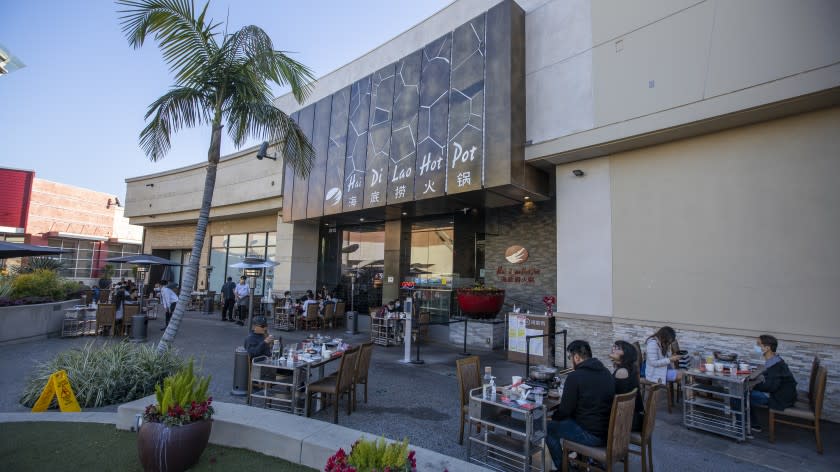Garcetti's big plans for L.A. restaurants and food carts

Mayor Eric Garcetti is proposing millions of dollars in restaurant aid and new programs to help street vendors and other struggling chefs and restaurateurs to avert fees, red tape and other logistical hurdles in the wake of COVID-19.
In a State of the City address on Monday evening, Los Angeles' mayor proposed $75 million for vaccine and PPE delivery; $151 million to programs that advance racial justice and economic equality; nearly $1 billion to address homelessness; and a $25 million “comeback check” program to help restaurants and other small businesses pay off debt and reopen, among other initiatives.
If approved, the 2021-22 annual budget — which goes into effect July 1 — would fund a series of programs to help L.A. restaurants, bars and food carts regain footing after a tumultuous year that has seen more than 100,000 U.S. restaurants shutter, be it permanently or temporarily, according to the National Restaurant Assn.
The proposed budget includes more than $1.3 million for Los Angeles street vendors, whose permit processes can be lengthy and costly. Before vendors can take to the streets, a range of health, sidewalk and sellers permits are required, taxes must be paid, and carts have to be registered and approved. The money allotted in the new budget would, in theory, help street vendors pay fees, “clear bureaucratic hurdles” and purchase new carts that are up to code.
A proposed ordinance would cut the time it takes to obtain a city alcohol permit, and the cost of applying and obtaining that permit would be cut as well; the mayor said those reductions would be 90% and 70%, respectively. Valet and offsite parking requirements could be suspended, while a deferral initiative could let restaurants delay select fees of $8,000 or more — for three years.
The “comeback check” program would provide 5,000 businesses with checks for $5,000 apiece, which could be used for payroll, rent or new equipment. “We’ll focus them where our city took the biggest hits,” Garcetti said, “from South L.A. to East L.A. to the northeast San Fernando Valley.”
Preexisting initiatives also receive consideration in the proposal. The city’s L.A. Alfresco program — announced last May — streamlines applications and approvals to turn sidewalks, parklets, parking lots and traffic lanes into temporary outdoor dining spaces and has already been extended. On Monday, Garcetti said he wanted to make alfresco dining permanent and noted his budget proposal includes $2 million in grants that would set up permanent outdoor dining parklets for restaurants in low-income areas.
Garcetti also noted that L.A. Optimized — a city program announced last year — will aim to connect 1,000 small businesses with marketing tools, website assistance and other aid to help digitize their trade.
“If we want a strong economy, we have to help small business owners thrive,” he said. “I know that in my blood.”
This story originally appeared in Los Angeles Times.

